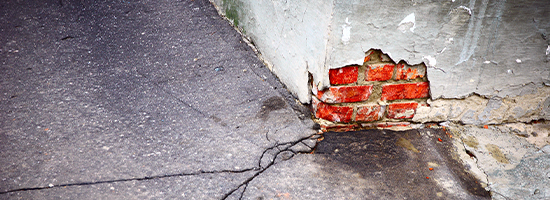
The Construction Defect Statute Of Limitations
If you’ve just purchased a new home or commercial building, and after occupying the structure you discover defects that need correcting, is there a time limit in which you must take legal action—in other words, a statute of limitations?
Suppose the electrical or plumbing system starts showing problems a year or two after construction. Is the contractor still liable and responsible for correcting the problem?
Of course, a lot depends on whether you as the occupant did something to bring on the issue, or if it was just the result of normal wear and tear. But if there was faulty workmanship, inferior products used, or any other violation of a contract or warranty, can you file a lawsuit? The answer can be yes in many circumstances. However, it’s important to understand what legal principle you’re basing your action on—implied or written warranty, oral or written contract, negligence, strict liability, or even Senate Bill (SB) 800, the Right to Repair Act for new home construction under California law.
If you suspect the problem you’re facing in your new structure is the result of something the contractor/builder or architect/designer did or didn’t do, you need to consult with a construction defect attorney to pursue your legal options. Depending on the type of defect and the legal clause under which it falls, you can have two to four years to file an action, and sometimes up to 10 years under what are called “latent” defects.
William B. Hanley, Attorney at Law stands ready to help you seek restitution for any construction defects in your home or building in or around Irvine, California, including all of Los Angeles, Orange, and San Diego counties. With nearly four decades of experience fighting for the rights of homeowners and commercial building owners, Attorney Hanley knows the ins and outs of the California Civil Code and other relevant laws and legal principles, including the Right to Repair Act.
California Construction Defects & Statute of Limitations
Under California law, the statute of limitations for a breach of contract or breach of warranty is two years for oral agreements and four years for written ones. The statute starts from the date of the breach itself, but courts have often held that the discovery of the breach is the starting point if the plaintiff was not in a position to discover it earlier.
If you wish to take legal action based on negligence or strict liability, the statute of limitations depends on the type of damage. If someone is injured or loses a life because of a defect, the period is two years from the injury or death. If it’s property damage, then the limit is three years.
There is also a four-year statute of limitations for defects related to the specifications, design, planning, observation, supervising, surveying, or construction of the property. The statute starts ticking from the date of the project’s completion.
There is, in addition, a 10-year statute of limitations for “latent” defects that show up after inhabiting or using the structure. The California Code of Civil Procedure (CCP) 337.15 says that “ ‘’latent deficiency’ means a deficiency which is not apparent by reasonable inspection.” In other words, the deficiency appears after first entry and occupation, perhaps even months or years later.
With overlapping statutes and causes for legal action, consulting with an experienced construction defect attorney as soon as possible is always the best route.
California’s Right to Repair Act
New residences constructed in California since 2003 fall under SB 800, the Right to Repair Act. SB 800 provides tiers of liability for the builder of a new home, depending on the type of defect that is discovered by the purchaser, or even by a subsequent re-purchaser, in some cases.
While the overall statute of limitations is 10 years, your time frame for filing depends on the type of defect. For instance, the statute for filing for plumbing and sewer systems, electrical systems, and exterior pathways is four years from the close of escrow. However, the builder must be given the “right to repair” before you undertake any legal action. If the builder refuses or fails to correct the defect, then legal action may be undertaken.
Seek Experienced Legal Counsel When Construction Defects Appear
Attorney William B. Hanley can help you navigate the various legal provisions under which you may be able to seek redress for defects in your home or building. Much depends on whether there were actual injuries or fatalities or physical damage and loss, and also on the type of contract, warranty, or agreement under which the construction took place. In some cases, the builder can be held liable to bring the structure up to agreed-upon specifications—and in other cases, the builder can be held responsible for losses and damages.
If you’re located anywhere in Orange, Los Angeles, or San Diego counties and you’re facing a construction defect issue, contact William B. Hanley immediately. He will listen to your story, investigate the problem, and steer you toward the best possible legal options. Seek to remedy your situation by obtaining sound legal advice today.
